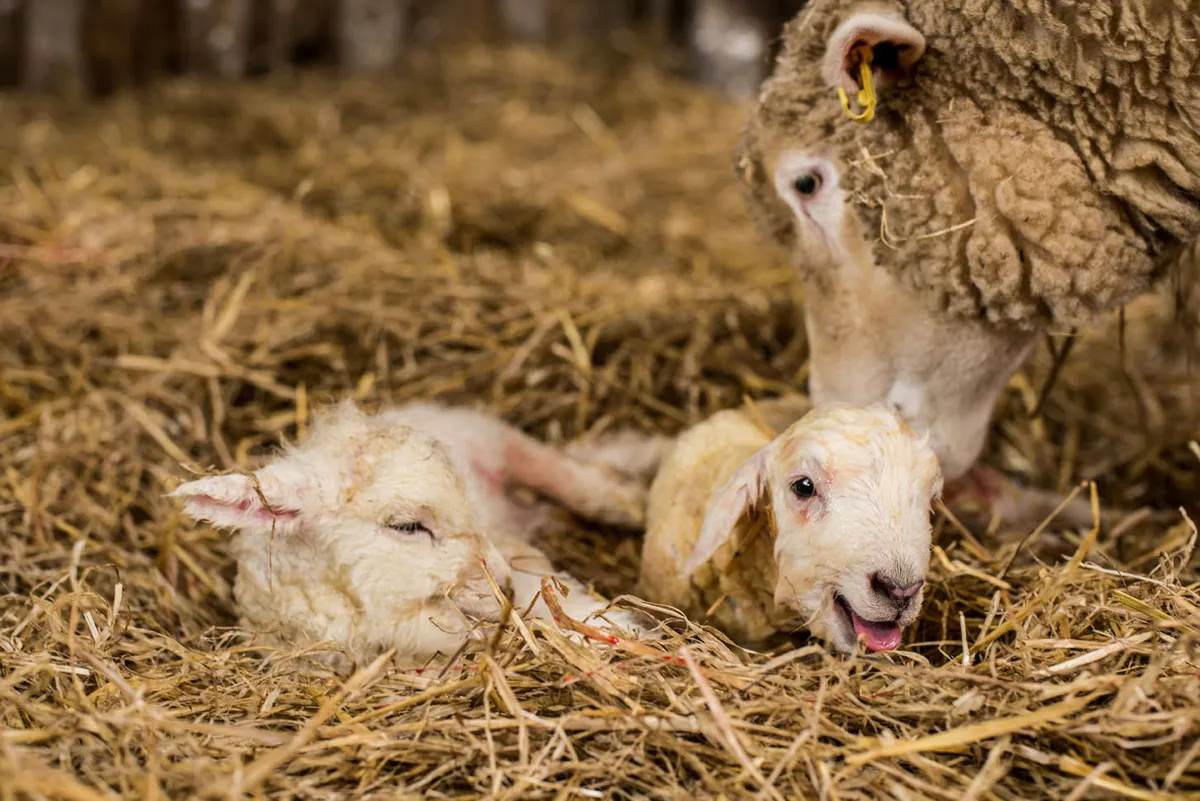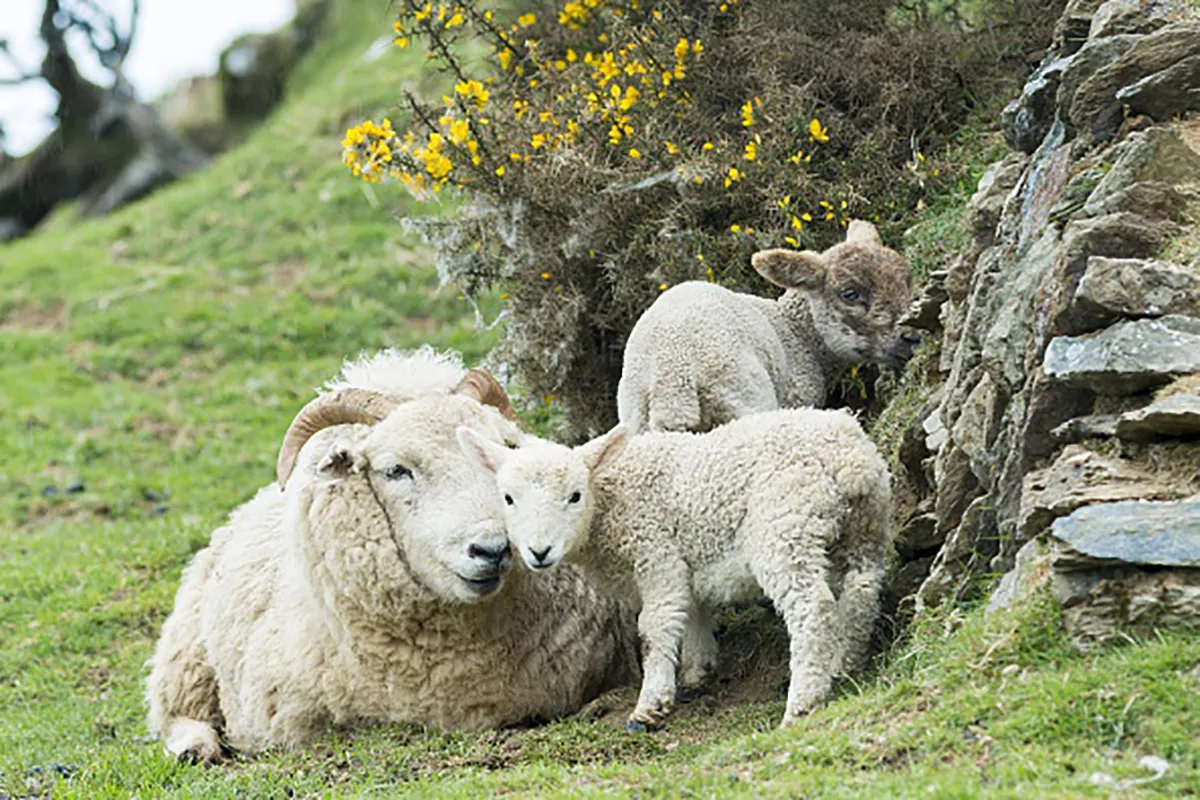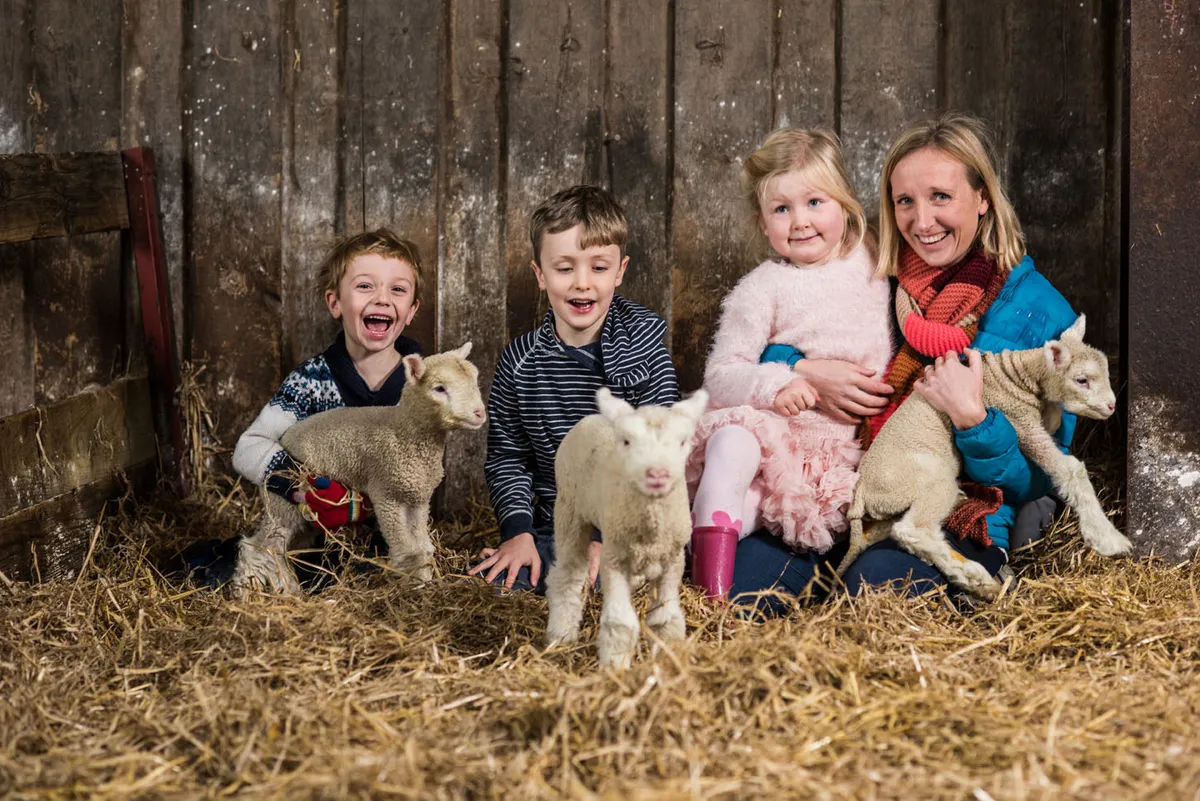It’s miraculous. Amazing. Unforgettable. And yet it’s commonplace on British farms. Every year, 16 million ewes give birth in the UK.
Here is our expert guide to the British lambing season, including when it takes place and where in the UK you can see lambs being born.
When is the British lambing season?
These days, lambing takes place anytime between November and May – but the birth rate still peaks in spring.
Farm stays to experience lambing
Here are a couple of farms where you can enjoy a spring break and watch lambs being born.
The Olde House, Cornwall

Experience life on Penpont working farm, featured in the pictures above and below, while staying in one of a range of self-catering holiday cottages. Take part in a range of activities from feeding the guinea pigs in Pet Corner to lambing and sitting on a tractor. There’s also an indoor swimming pool, farm trail and play barn, and a hide for bird-watching.
Native British sheep breeds and how to recognise them
During any countryside walk, it is very likely that you will pass a field of sheep grazing or lambs frolicking. Britain is home to a variety of native sheep breeds.
Here is our guide on native sheep breeds in Britain, with a few key details on how to identify and key characteristics.
Hare Farm Hideaways, Sussex
Lambing takes place on a large scale here, with 1,000 pregnant ewes giving birth in four different farm buildings, just a stone’s throw from the shepherd's hut and oast house holiday homes overlooking the serene village of Brede.
Abbey Farm Liveries, Norfolk
Guests can help the shepherds lamb the 600 ewes, including day-to-day running of the flock, feeding, cleaning and bedding-down pens, nursing and bottle-feeding pet lambs. Book the onsite self-catering cottage, or pitch up the tent or caravan.
Guide to the farming calendar: a year in the life of a British farmer
From weaning calves in January to livestock markets in July and rebuilding walls in December, farmers are busy all year round. Month by month, our farming guide looks at the busy year in the life of a British farmer.
Stay Lambing Live, Cumbria
Lambing takes place in March and April at Stay Lambing Live, so named because this was the location in 2011 for the BBC’s Lambing Live, presented by Kate Humble and Adam Henson. The 400-acre farm has 850 sheep.
Millmoor Farm Holidays, Cheshire
Watch lambs being born between January and April, and hand-feed orphan lambs in February. Book one of a number of self-catering lodges.
What is it like to experience lambing?
Ali Wood relates the wonder of taking the kids lambing.

It’s mid-lambing season, and the kids are clambering over the hay bales with the farmer’s sons, imaginary rifles in hands. Around us, fat-bellied ewes graze and sleep, apart from one, who is pacing and emitting a low-pitched bleat. She pauses to lick her newborn lamb, now an hour old, then slumps down into the fresh hay, ready to give birth to another.
We’re in the lambing shed at Penpont Farm, which, thanks to the mild Cornish climate, has an extra lambing season in November. While the children play, my baby daughter is sound asleep in her carrier, despite the cacophony of starlings fighting over spilt corn, and the noise of the tractor moving older lambs out to the surrounding fields.

At four years old, the ewe is an experienced mother, and her first lamb today was born easily.
“I noticed a couple of hours ago that she was bleeding,” says the shepherd, Rob Hawkey, who works 12-hour shifts during lambing season with his cousin Oliver. Farming at Penport is in its third generation and the pair are old hands at lambing. “I knew she was coming to lamb, but I didn’t expect it to happen so quickly, as some pace around for hours. I came into the shed and she was half out.”
It’s time to deliver the ewe’s second baby, so Oliver gets down on his knees, and gently slides his hand inside her to check the position of the lamb. Most ewes give birth without assistance, but with multiple births the shepherds like to get them out quickly, so that the lambs don’t get muddled up with other little ones born at the same time.
“We check that both legs are coming,” explains Rob. “It’s not like with humans. We want the legs first, not the head, because if they get stuck you can’t pull the neck.”
I call over the children. They’re mildly annoyed at having to stop their game of soldiers but soon become curious."
Oliver nods. This one’s in the right position. Had it been breech, he would have had to pull the lamb out quickly, because once the legs are out past the navel they start breathing and can drown in the ewe’s water bag.
“Only you can’t pull too fast, because you might break their ribs,” warns Rob. “It’s not as hard as it sounds,” he adds quickly, noting my horrified expression.
The water bag pops with a farting sound that delights the boys, and out comes a pool of blood-tinged water, followed by a dainty pair of hooves, which poke out like a crocus. The mother remains stoic.
The kids edge closer, although I can see that Brenin, my five-year-old, is anxious. I must confess, I am, too. We saw a lamb stillborn two years ago while walking through a field, and it was distressing to watch the farmer swing it around to dislodge fluid from its nose and make fruitless chest compressions.
With one hand on the ewe’s side, Oliver pulls the lamb by the ankles and we all gasp as a sweet little face emerges. He wipes the lamb’s nose, and swiftly pulls out its lean body like a rabbit from a magician’s hat. It’s still. “Oh, no!” says Brenin.
Oliver rolls the mother up on to her feet and carries the limp, wet lamb by its forelegs around to the mother’s head so she can lick it. Relieved, I see the lamb’s ears twitch, and it raises its head to nibble on the hay.
“It’s born! It’s born!” shouts Brenin.
It’s been a straightforward birth, but that’s not always the case. Yesterday, one of the mothers lay on her newborn lamb and killed it. When that happens, the shepherd will give the mother an orphan lamb to feed, but she won’t always be fooled. At times, they have to resort to bottle-feeding.
“When I was younger, I’d form attachments to the bottle-fed lambs,” says Rob. “But not now. When you get older, you see that many. I must have been seven or eight years old when I lambed my first sheep.”
The newborn lambs are now on their feet suckling. They’ll stay in a pen until they’re three days old, before being moved out to the field.
Our conversation is interrupted by a flurry of joyful, high-pitched bleats. Four newborn lambs skip into the barn, followed by Oliver’s nephew Joshua, who carries the fifth close to his chest, like a large teddy bear. We sit in the hay to bottle-feed them, and I can feel the lamb’s heartbeat slow as it relaxes in my arms – at least until three-year-old Dylan pours milk over its nostrils.
It might only be a lamb – one of 300 to be born on this farm over the next 10 days – whose carcass will fetch £100 in a few months’ time. But, right now, it’s a little miracle, one that has taught my children their very first lesson about life, and thankfully not death... I’ll leave that one for another day.
